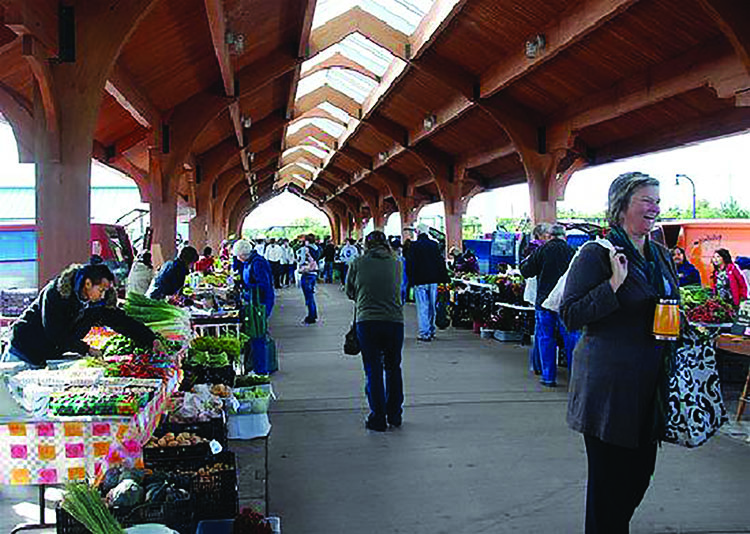Think local
Buying locally-sourced produce is a great way to minimize carbon emissions while eating healthy
More stories from Madeline Peterson
Going to the grocery store is oftentimes not only a chore or household activity, but also a lesson in geography. Many of the foods found in a chain supermarket are not from a nearby area, and while it may be interesting to discover that one is drinking Floridian water and making a salad out of Chinese lettuce, unfortunately it’s often not as environmentally sustainable as eating local food.
As global temperatures increase and pollution runs rampant, it’s logical to ask what can be done in order to stop the environmental destruction around us. Buying local food is a smart way to reduce one’s carbon footprint while also making healthy choices and supporting local businesses.
According to a study done at Iowa State University, the average piece of produce in the U.S. will travel more than 1,500 miles before reaching its destination. In order to cover this formidable distance, a great deal of fossil fuels must be used as produce to be transported by planes, trucks and boats. By comparison, locally produced food will oftentimes only travel 100 miles or fewer, generating emissions at a much lower rate.
Although it may sound difficult to find access to local produce, it is only growing easier as local farmers markets and community supported agriculture (CSA) programs become more prevalent in America. CSA programs allow individuals and families to buy a share in a farm, and then receive produce on a weekly or bi-weekly basis throughout the season.
For the past three summers, I have worked on Haaken Hill Farm, an organic vegetable farm in Eau Claire.
In addition to a CSA program, much of our business goes to restaurants around the region that are becoming more committed to serving local food. These farm-to-table restaurants such as The Informalist and the Local Lounge enable diners to enjoy a meal out while still remaining dedicated to high-quality, locally sourced food.
Buying from farms in our area makes it easier to get to know the businesses and people that are producing the food we consume. This way, we can better ensure that food is free of pesticides and other chemicals, and also that workers are being treated fairly.
The biggest argument that many make against buying locally sourced food is that it’s too expensive. Buying produce that is in season is the best way to combat this, along with budgeting for groceries in advance. It’s also important to remember that it doesn’thave to be an all-or-nothing situation. Supplementing normal groceries with whatever amount of local produce that can be afforded is a great first step to take.
Eau Claire residents are fortunate because we have so many great opportunities to eat and shop for local food. Recently, grocery cooperative Just Local Food announced that it is moving to a new location on Water Street, making it even easier for college students to gain access to responsibly sourced produce.
There is no single solution to global warming. However, there are many things that we can do to reduce the negative impact we have on the environment, and buying food grown in our region is one of them. When it comes to grocery shopping, it’s best to think local.











